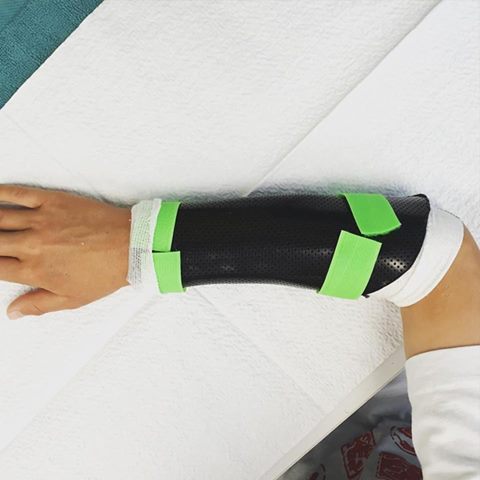
A broken arm refers to a crack or break on any of the three bones in the arm – the ulna, the radius and the humerus. Broken arms usually require medical attention immediately.

Symptoms of a broken arm
Often the most immediate symptom of a broken arm is an audible crack upon impact. The area may be extremely tender and painful to touch. Other symptoms will include bruising, swelling, inability to move elbow or wrist properly and, in extreme cases, deformity.
Causes of a broken arm
A broken arm will usually be the result of some sort of heavy trauma. Common causes are a heavy fall where the arm, hand, wrist or elbow takes the brunt of the impact; sports injuries or accidents where the arm suffers a heavy blow; a severe accident like a car crash or falling off a skateboard or bike where the arm breaks from direct trauma. You can even break your arm in an arm wrestle!
What are the different types of breaks you can sustain?
These are some of the common types of fractures:
Compound fracture – This is when the break is severe, causing the bone to pierce the skin. Immediate medical attention is required. A closed fracture is when the skin does not break.
Comminuted fracture – This is when the bone is shattered into fragments.
Greenstick fracture – When the bone cracks but doesn’t actually break the entire way through. Quite common in children as their bones are more flexible than adults.
When Is Hand Therapy Necessary?
For most arm fractures, it is necessary to see your a doctor. They will refer you for x-rays to help determine whether you can be managed conservatively by cast immobilisation or require surgery to obtain correct bone alignment in order to ensure a healthy healing process.
Your hand therapist can fit you with a waterproof cast once your swelling is down, and assist you to regain motion and strength once the fracture is healed. 
Surgical Treatment
Surgery is generally required for severe breaks with displaced fractures. Fixation devices including screws, plates, nails or K-wire will help stabilise the healing process. You will usually be referred to a hand therapist following surgery to help control swelling, regain motion, and provide a removable brace to protect the surgical site.
If you have any questions regarding a condition you have or to book an appointment, feel free to contact us here. Hand Therapy would be more than happy to help.
